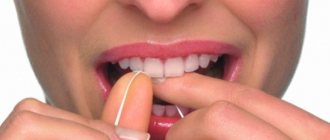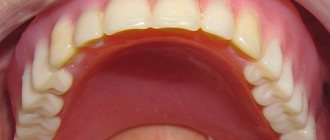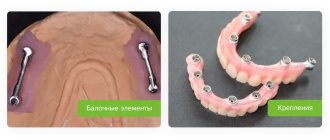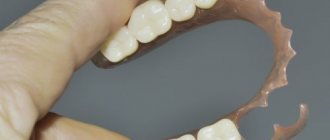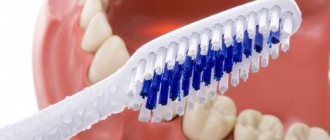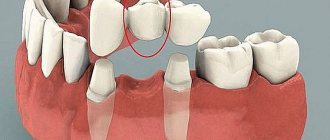1306
Modern dental instruments and materials are devices made using innovative technologies that allow the highest quality restoration or replacement of a lost tooth.
These components are safe for health, hypoallergenic and durable. One of these types of filling materials will be discussed in this article.
Types of composites
According to the curing method there are:
- chemically curing (paste - paste, powder - liquid);
- light-curing (photopolymers).
The consistency of the initial paste-like composite depends on the amount of filler and dispersion. There are pastes of high viscosity (packable and dense), as well as low (fluid). Most materials use fillers with average particles with a diameter of 0.2-3 microns. There are also particles with a diameter of 0.04 microns - microdisperse filler. The proportion of particles that would be even smaller ranges from a few% to 35%. Recently, varieties of composites with nanofillers with a size of 1-10 nm have appeared.
Recommendations after the photopolymer filling procedure
After filling teeth, dentists usually give patients advice on what can be done after filling and what should be delayed. Temporary restrictions are imposed for the benefit of the patient - they aim to extend the life of the restorations and their aesthetics, and concern those moments when it is possible to eat, smoke cigarettes and come into contact with aggressive dyes.
After filling teeth with photopolymers, it is advisable to forget about cigarettes for two hours. Before eating you need to wait an hour and a half. You can drink water whenever you want, but it is recommended to drink black tea, coffee, concentrated juices and other drinks that can stain a fresh restoration no earlier than 24 hours after filling. Also, during the first post-filling days, women should not use bright lipstick.
Sometimes fillings need to be adjusted. If after filling, when the anesthesia wears off and sensitivity returns, the patient feels that the filling is in the way, the dentist must be informed about this. The dentist should also be aware of any other defects in the restoration if they are discovered.
Composite dental restoration, according to reviews from patients and dentists, has some disadvantages: it requires patience from the patient, since you will have to spend from one to 2-3 hours in the chair. The dentist will also require significant labor costs, as well as experience working with modern composites. In addition, restored teeth will require more careful care and periodic polishing to restore their natural shine.
Judging by patient reviews, there are still many more advantages to composite dental restoration:
- Great aesthetics.
- Reliable and durable restoration of the destroyed coronal part.
- Possibility to perform the procedure in one visit to the doctor.
- The ability to restore several dental units at once in one visit.
- The ability to perform all types of correction of the shape, color and size of the crown.
Moreover, such a procedure has practically no contraindications - they can only be considered as general severe conditions of the patient, in which any dental intervention is not possible.
Microhybrid and microfilled composites
Smooth and shiny microhybrid composites contain a mixture of fine and microdispersed particles (84% filler by weight). By volume, the filler concentration reaches 70%, since there are microdispersed particles in the spaces between the fine particles.
A distinctive feature of microfilled composites is the large surface area of the microdisperse filler. For the paste to acquire sufficient viscosity, 30-50% of their volume is enough. The composition may contain microparticle-reinforced polymer particles with a size of 10-20 microns, mixed with a polymer matrix. The fine filler in such composites is quartz, lithium aluminum silicate, porcelain flour or glass - barium, zinc, ytterbium, which often have non-radiographic properties. Microdisperse – colloidal silica particles.
The manufacturer indicates the degree of radiopacity in the characteristics of the composite. If the material is permeable to x-rays, it is advisable to use it on the lateral teeth. Finely dispersed varieties are matte in appearance and not transparent enough, while microdispersed varieties have optical properties close to enamel.
| Characteristic | Microhybrid composite | Microfilled | Compomer | Hybrid ionomer | Glass ionomer |
| Compressive strength | High | Above average | Above average | Average | Below average |
| Flexural strength | High | Above average | Above average | Average | Below average |
| Flexural modulus | High | Above average | Above average | Average | Above average |
| Wear resistance | High | Above average | Above average | Average | Low |
| Fluoride release | Low | Low | Below the average | Above average | High |
| Ability to absorb and restore fluoride concentration | Low | Low | Below average | Above average | High |
| Aesthetics | Excellent | Excellent | Excellent | good | Bad |
General overview
A composition based on a nanocomposite mixture is a mixed structure consisting of dissimilar elements. Within the framework of dentistry, this term defines materials that are different in nature of origin and method of formation, the percentage of filler content in which is at least one third of the declared volume. The basic elements for such combinations are barium glass, quartz, zirconium and titanium silicates, metal oxides, polymer crystals, and heavy salts.
The versatility of nanocomposites, which are elements whose volume is equal to a nanometer, is manifested in the range of their applications. In dental practice, such materials are used:
- As a raw material for the manufacture of fillings covering carious cavities;
- To eliminate areas of erosion on the enamel coating;
- When correcting wedge-shaped defects;
- As a material for temporary fillings that can be built up in case of chips;
- As an insulating or sealing agent.
The production processes implemented to create such mixtures allow the modernization of hybrid structures through point modification, as well as the reproduction of true nanocomposite elements based on their own structural carriers.
Composite base
The composite is based on common polymer oligomers – dimethacrylate or urethane dimethacrylate. These are viscous liquids containing monomers with low molecular weight, which regulate the degree of paste-likeness of the substance. Oligomers and monomers are characterized by double carbon bonds, so they undergo a polymerization reaction and transform the composite into a polymer.
The curing base is a system that promotes polymerization under the influence of high intensity visible blue light. Polymerization requires 20-40 s. In chemically cured composites, an organic peroxide acts as an initiator, and an organic amine acts as an activator. They are mixed right before applying the composite.
Structure modification
Modification of hybrid class compounds in industrial conditions is a consequence of the need to create a separate filler space containing elements of different volumes. Smaller fractions fill empty spaces in the mass, providing mechanical strength, polishability, and aesthetic appeal. Large elements act as a guarantee of complete structural filling, increasing the resistance of the finished composition to loads.
Due to the uneven distribution of micro-fragments, which tend to stick together, it became necessary to use an innovative homogeneous distribution technique that supports the creation of an absolute coating and resinous impregnation of small compounds. As a result of scientific research, hybrid mixtures have emerged - modified materials that are characterized by strength and long-term preservation of aesthetic properties.
Pigments
The presence of pigments in the composite makes it closer to the natural shades of teeth. They are in no way inferior in aesthetic indicators to zirconium crowns for the front teeth. Manufacturers offer about ten or more shades that cover the natural gamut - from gray to yellow. It is possible to obtain other colors that go beyond these limits by mixing intensely colored pigments. Special tones are used to fix veneers, whitened teeth and metal-free dentures.
Manufacturers
Over the past few years, a number of famous brands have appeared on the global market for manufacturers of dental materials, specializing in the production of restorative mixtures discussed in this article.
Filtek Supreme XT
A true nanocomposite from the world famous company ZM ESPE. Contains only nanometers. Capable of combining high polishing index, long-term restoration shine, and the strength of microhybrids.
Application area:
- aesthetic restoration of the frontal organs;
- forming tabs;
- stump superstructure;
- laboratory production of veneers;
- organ splinting.
The main advantage is seven shades of dentin and 13 for the outer layers of tissue. In addition, the mixture does not stick to the tool and has an optimal consistency, making it easier to work with the material.
The disadvantage is the high price, which, however, fully corresponds to the declared quality.
Ceram X
Hybrid LED composition, which is based on modern nanomaterials, which are ceramics modified with organic compounds with combined nanohybrids.
The material is distinguished by its high dispensability and its chemical nature resembles glass and ceramics.
The main purpose is that with the use of a minimum amount of colors you can achieve excellent aesthetic characteristics. Has two stand-alone shade palettes.
Manufacturer: Dentsply.
The main advantage is the uniform transparency of the mass . An ideal solution for frontal restorations.
Grandio
The representative is a composite considered one of the luminaries, the first to appear on the international market of goods for dentistry and medicine.
Composition: microscopic nanofragments.
Advantages:
- excellent physical performance;
- durable restoration;
- high percentage of filler;
- mechanical strength of the mixture;
- handling characteristics that meet international requirements for this group of materials;
- versatility, significantly expanding the range of uses.
Application:
- direct filling;
- frontal reconstruction;
- aesthetic correction;
- production of veneers;
- inlays, stump formation.
Premise Herculite XRV Ultra
The latest generation restorative composition from the manufacturer Kerr is made on the basis of a combination of Herculite XRV elements, which is quite in demand among foreign and Russian dentists.
An improved polymer structure, high clinical characteristics, unique strength, resistance to pigmentation and efficiency of use – these are the main advantages of the composite.
A distinctive feature is the ideal distribution of microparticles , as a result of which the surface practically does not wear off and retains its original shine.
It has 16 shades identical to natural tooth enamel.
It is perfectly combined with adhesive structures and interacts well with fluid masses.
Tetric EvoCeram
Composition with increased light reflectivity from . Specially designed for restoration , filling of frontal units and chewing fragments of the jaw row.
It contains the optimized Tetric Segat component, which has proven itself in dental practice.
It has a color coding that simplifies the specialist’s work and allows you to achieve an optimal external effect.
Simile
Modern high-tech composition from.
Main advantages:
- improved manipulation capabilities;
- excellent color rendition and accuracy of palette shades that best match the surface of the tooth enamel;
- excellent polishability is achieved by the presence of a large number of nanostructures in the mixture.
Use with most major brand adhesive systems.
Sapphire
This mixture is positioned under the TBI Company trademark, which is also the manufacturer of the component.
It is considered an ideal solution in the process of cavity restoration of organs of all classes. It contains Bis-GMA class resins and structures of inorganic origin with a fairly massive volume of particles.
Numerous laboratory and clinical tests have revealed the following benefits:
- high strength;
- decent aesthetics;
- abrasion resistance;
- long-term preservation of color pigment;
- durability of operation;
- ease of use.
Ideal as a combining agent for modern V generation adhesive systems.
NanoPaq
Material from. It is based on advanced nanotechnology. A distinctive feature is the presence of inorganic formations in the composition ; their mass fraction is quite high, as the company claims, at least 82% of the total specific gravity. This provides additional density and enhances the strength of the mixture.
Has several degrees of transparency:
- absolutely matte component;
- low-transparent;
- medium transparency;
- highly transparent material, which has practically no analogues in the world.
At the same time, the level of transparency is amenable to technological control , which will make it possible to obtain intermediate options.
It is characterized by an almost unlimited range of applications in all the options discussed above.
The video provides additional information on the topic of the article.
What is polymerization shrinkage
When choosing a composite, polymerization shrinkage must be taken into account. It can reduce adhesion to tooth tissues and lead to insufficient marginal seal. Thus, microhybrid composite materials are optimal for inlays in the oral cavity, since they shrink less during curing than microfilled ones.
2 ways to minimize polymerization shrinkage:
- layer-by-layer application and fractional polymerization of composites in order to reduce overall shrinkage;
- production of an inlay in the laboratory on a plaster model, followed by fixation on the tooth with a flowable composite material and ultrasound.
Where is the best place to fill teeth in Kharkov?
For high-quality and aesthetic dental fillings, we invite you to the Misto Dent dental clinic. To accurately diagnose caries, we use the Diagnocam laser device. We work only with proven composite materials from foreign manufacturers. The use of anesthesia is a mandatory stage of dental filling in our clinic.
Our highly qualified specialists restore teeth quickly and painlessly, thanks to experience and a modern device for computer anesthesia STA. Regardless of whether you want to cure or make your teeth more attractive, by entrusting this procedure to our doctors, you will be satisfied with the result.
To obtain the highest quality results, all restorations at MistoDent are performed under magnification, using a Carl Zeiss and Leica operating microscope.
| Call our phone number: 38, we will be happy to answer all your questions or schedule a consultation at a time convenient for you |
Thermal expansion and water absorption of composites
The thermal expansion of composites is higher than that of natural tooth dentin and enamel. This indicator depends on the amount of polymer. It is higher for microfilled composites than for microhybrid ones. They also differ in the degree of water absorption. Microfilled varieties are more likely to change light under the influence of water-soluble dyes.
The consequence of water absorption is an increase in volume, but it does not in any way compensate for polymerization shrinkage, but on the contrary leads to a deterioration in the properties of the polymer.
A regular filling or a light filling – which is more aesthetically pleasing and reliable?
Dentistry is one of the branches of medicine where the introduction of innovations occurs with maximum speed, not only in the West, but also in our country.
Long forgotten are the days when patients were terrified of going to the dentist, fearing severe pain during treatment and an unaesthetic cement filling.
Light (photopolymer) filling – until recently it was a novelty and an excellent alternative to other materials, but after quite a short time it became quite firmly rooted in the practice of dentists, who are increasingly recommending this durable and aesthetic material to their patients. Today, a light filling and a regular one are used; the difference between them is significant.
Concept of light seal
The material from which light fillings are made hardens when exposed to ultraviolet light.
A permanent photo seal has a number of advantages. The most important advantage is considered to be a wide palette of colors, thanks to which it is almost impossible to notice the filled area if the filling is placed correctly. The main component of the light filling, to which it owes its properties and name, is heliocomposite. When exposed to light, it breaks down into radicals, which leads to polymerization of the light filling.
In addition to heliocomposite, the gel filling contains fillers that affect its appearance and quality. The service life depends on them.
Macrophiles are large inorganic elements. They give the following properties:
- strength;
- rough surface;
- unstable color;
- radiopacity (allows you to monitor the carious process).
Microphiles are small particles that impart properties such as:
- light polishing;
- glossy shine;
- color stability;
- instability to mechanical loads.
Mini-fillers combine the properties of previous particles, but are rarely used. They are suitable for restoring teeth with minor defects, as they have:
- average resistance to mechanical damage;
- difficulty in polishing;
- low strength.
Nanohybrid composites are ultrafine particles that combine the best properties. Such fillings are suitable for restoring teeth of varying degrees of damage. Once placed, the filling is completely invisible.
Service life of light seals
The service life of a light filling, if the dentist’s recommendations are followed, is 5-6 years. You should maintain oral hygiene, go for regular checkups, brush your teeth twice a day, etc.
Nutrition matters. It is advisable to monitor it not only in the first week after the filling is placed. This does not mean that it is necessary to switch to a strict healthy diet, excluding sweets, flour, fatty and other foods from the diet.
You can increase the amount of vegetables, fruits, and dairy products in your diet and stick to a normal diet, eliminating daily trips to fast foods, excessive consumption of processed foods, etc. Most people eat this way, there is nothing special about it.
Indications for prosthetics
Indications for installation of restorative and stump composite inlays differ. For example, a restoration can be installed if the natural crown is destroyed by no more than 50% (and at the same time more than 2 of its walls are preserved). Restorative ones are usually fixed only on chewing teeth. Stumps are placed in case of more significant damage to the “native” crown - if it is destroyed by more than half, and even if all the walls are broken at the root. But, we repeat, it’s still not worth making composite stumps - they won’t withstand the load.
How long after can I eat?
After installing any type of filling, you must follow the dentist's recommendations. The light seal is no exception. Usually everyone is concerned about the first meal after installation. You can eat in 40 minutes, but to be on the safe side, it is advisable to wait 2 hours. These precautions will extend the life of the tooth filling.
For the first few days, it is advisable not to eat foods containing aggressive pigments. You will have to abstain a little from pomegranate, cherry juice, tea, coffee, borscht, beets and other things. This will maintain the shade of the filling so that it does not differ from other teeth in color.
Sweets and flour products are also prohibited. These products create a favorable environment for the proliferation of bacteria and other microorganisms.



